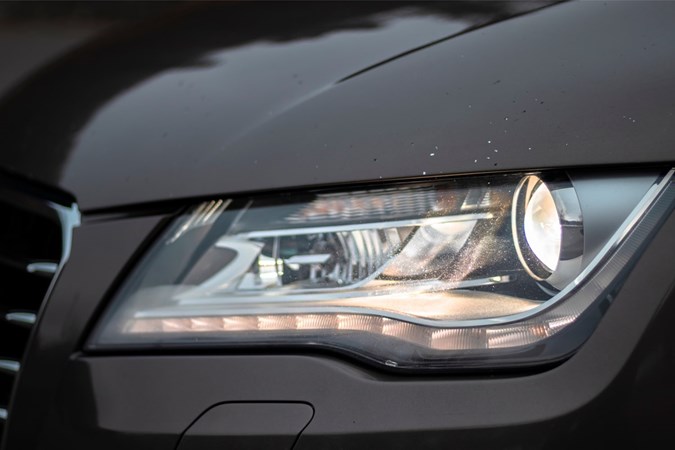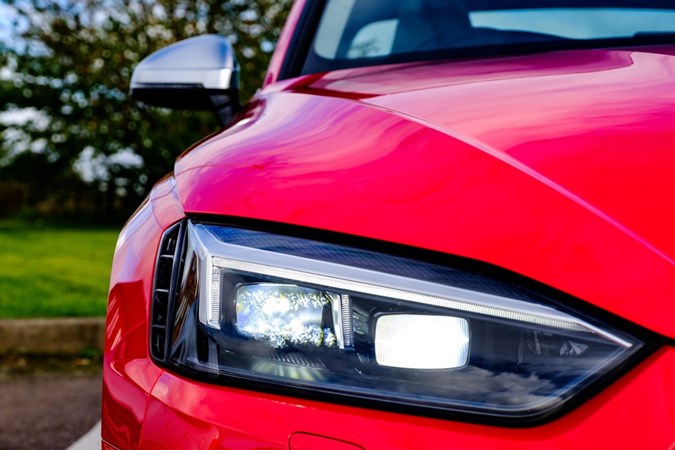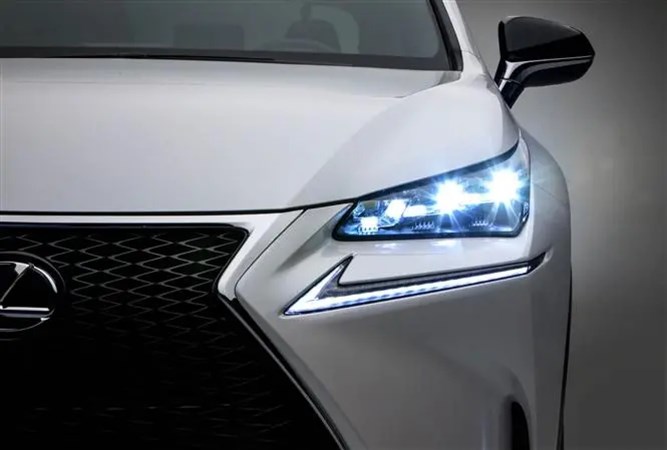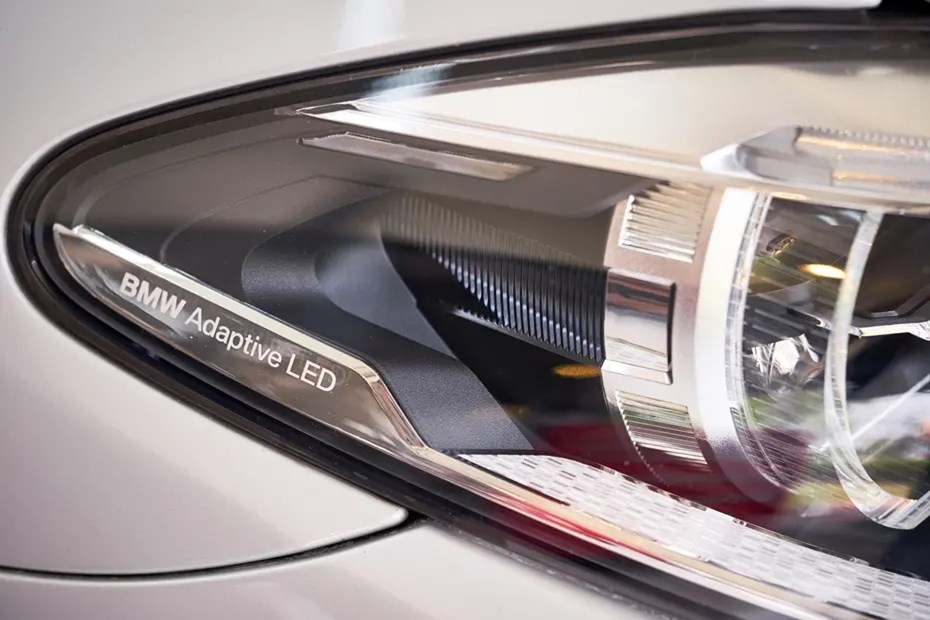Just 20 years ago, a car’s headlight was a simple bulb in a reflective bowl that threw some light roughly in front of the car. But car headlight bulb technology has advanced rapidly in the past decade – the latest adaptive headlights are incredibly sophisticated bits of kit that take the ‘see and be seen’ principle to new heights.
Now, lots of cars feature adaptive headlights as standard – and they’re optional on many more, including cars as humble as the Vauxhall Astra and Volkswagen Golf. Here, we’re going to explain everything you need to know about adaptive headlights, the capabilities they have and whether they’re actually worth having.
But we’ll start with a quick history lesson. For most of the 20th Century, car headlights used halogen bulbs with a glowing metal filament inside a glass housing, just like a household light bulb. They were the best technology at the time and are still the easiest to maintain, as replacement bulbs are cheap and easy to fit.

In the early 21st Century, xenon bulbs became popular on high-end cars and in the aftermarket. They cast a whiter, more powerful light to help the driver cut through the darkness. Then, around 2010, LED headlights started to take over. They have projector units that produce highly concentrated beams of light in the same way as a film projector.
The light they produce is even brighter and clearer than halogen and xenon bulbs. The tech also allows much more precise control of the beam of light, which is key to the capabilities of adaptive headlights.
Inevitably, the terminology around adaptive headlights can be quite confusing, especially as some of their abilities are found in cars with regular lights. Many car manufacturers that offer adaptive headlights also have a brand name for them adding to the confusion. Keep reading our handy guide to cut through the jargon.
Are automatic headlights and adaptive headlights the same thing?
No. An automatic headlight is hooked up to a sensor that detects how much ambient light there is which turns the bulb on when it goes dark. Adaptive headlights do this, as well, but that technology has been around for decades.
There are other things that adaptive headlights can do automatically, like switching between high and low beam – often known as high-beam assist. In old school headlights, you switch between them by pulling on a steering column stalk. Adaptive headlights detect the light from an oncoming car’s headlights and pick the right moment to automatically switch to low beam.
Low beam takes several forms in adaptive headlights. In some cars, the LEDs or projectors swivel a few degrees away from the oncoming traffic, while others block out a chunk of the light beams. The benefit to you is that you can see just as far and as clearly with an adaptive headlight on low beam as high beam without dazzling oncoming drivers.
The video below shows how the automatic low beam system works on the BMW 5 Series’ adaptive headlights.
What is an adaptive front lighting system (AFS)?
Adaptive front lighting system is just the generic term covering all adaptive headlights. Different manufacturers have brand names for their variation on the tech. For example, Audi calls it Digital Matrix LED Headlights, Porsche has its Dynamic Light System and Lexus offers Bladescan Adaptive Headlights.
It’s worth noting that some headlights with incandescent bulbs are technically classed as an AFS because they turn with the steering to light the way round corners. Such headlights are known as curve-adaptive and were first popularised on the 1950s Citroen DS.
However, when we refer to adaptive headlights now, we’re referring to ones that use LED or projector light. The most common type of adaptive headlights are often called matrix lights. They have lots of individual points of light, usually several hundred LEDs or a smaller number of projector lights. There are various mirrors with the headlight unit, as well.

All adaptive headlights automatically turn on when needed, and switch between high and low beam as necessary. They also turn with the steering. What marks out one set of adaptive headlights from another is how far they take those abilities and any extra features they may have.
You can get adaptive headlights of some sort on everything from a Ford Puma to a Rolls-Royce Phantom. Many cars now have them as standard, but they’re available as an option on others. Some manufacturers offer several grades of adaptive headlight, as well.
How do adaptive headlights work?
The key component in an adaptive headlight is a little electric actuator that controls the vertical and horizontal angle of each beam of light. Those actuators are linked to a camera that detects the light from oncoming traffic and scans the road for corners and junctions. Some manufacturers have their own variations on the principle, for instance Lexus’s Bladescan tech uses mirrors to direct and shape the light.
So, what capabilities do adaptive headlights have? All adaptive headlights turn with the steering, so you can see further round a corner. More advanced ones linked to road-scanning cameras can project the beam of light a bit further to illuminate the corner before you get there. Similarly, some adaptive headlights can swivel a single headlight towards a junction you’re indicating for. If you’re approaching a hill, the headlights can point the beam upwards.

If there’s oncoming traffic, adaptive headlights can shape their beam so that the drivers aren’t dazzled, while giving you as good a view forwards as possible. Some also work with speed sensors to determine how far ahead you need to see for the speed your going and they can determine what lighting you need for the weather conditions, which can be particularly useful if you’re unsure when to use headlights in winter.
On top of all that, Ford is trialling headlights that can project warning symbols and navigation instructions, turning the road into a giant head-up display.
Are adaptive headlights worth it?
The benefits of adaptive headlights are clear. They give you, the driver, a better, brighter, clearer view of the road ahead at night without dazzling oncoming drivers. That improves safety for everybody.
There are statistics to back up the benefits, too. The UK’s Royal Safety Observatory published a study into the effectiveness of different types of headlights. Of advanced frontal lighting systems, the study said: ‘With AFS, drivers were capable of recognising the pedestrian earlier than with a standard system, thus leading to a benefit of approximately half the length of a passenger car.’ That could be the difference for stopping in time in an emergency.
Similarly, a 2020 study by America’s Insurance Institute for Highway Safety (IIHS) found that ‘curve-adaptive headlights were associated with a 5.8% reduction in the frequency of property damage claims loss and a 1.1% reduction in the frequency of collisions claims.’
If the car you like comes with adaptive headlights, then fantastic. If you’ve switched from a car with incandescent bulb headlights, you’ll be amazed at how much better your night-time vision is. If you’re thinking about adding them to your car from the optional extras, then there’s reason to take a moment to think about it.
See, as an option, they can be pretty expensive. For example, Porsche’s top-grade adaptive headlights add over £1,300 to the price of a Panamera and, because they’re a deviation from the car’s standard spec, they must be declared on your insurance. That could bump up your premium, as they’re very expensive to replace in the event of an accident. Indeed, an IIHS study found adaptive headlights can increase the cost of a claim by 4.7%. As they’re sealed units, headlight restoration won’t be as easy down the line, either.
Not all adaptive headlights are created equal. Try out the ones from different brands and you’ll notice differences in how snappily they switch between high and low beam, plus how smoothly and rapidly the light beam shapes and bends.
Despite these variations in effectiveness and the extra costs that can be associated with them, we reckon the safety benefits mean it is well worth getting adaptive headlights.











